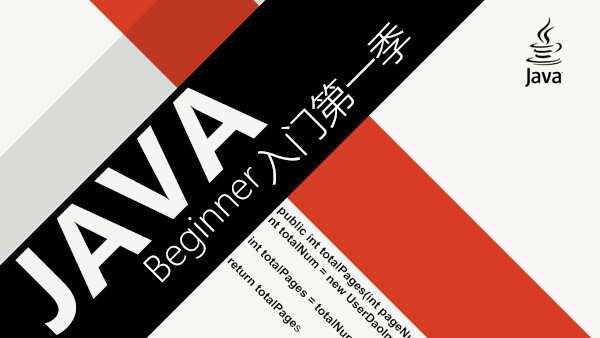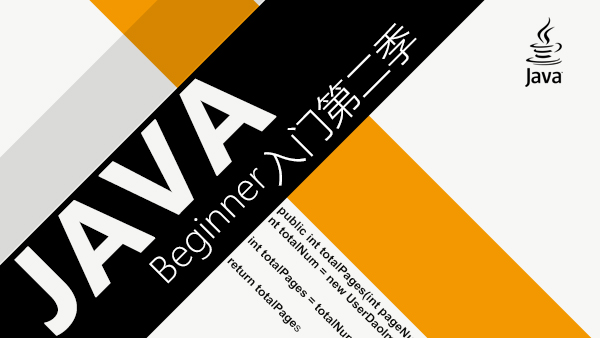本文详细介绍了IM千万级项目开发教程,包括基础知识、开发环境搭建、核心模块详解以及实战案例,旨在帮助新手入门并掌握IM项目的开发流程和技术要点。
IM千万级项目开发教程:新手入门指南 IM项目基础知识IM项目简介
即时通讯(Instant Messaging,简称IM)是一种允许用户即时发送和接收消息的通信方式。IM系统广泛应用于社交网络、在线客服、企业内部通信等多种场景。IM系统的典型特点包括实时性、用户数量众多、消息量大等。
IM项目开发流程
IM项目的开发流程通常包括以下几个步骤:
- 需求分析:明确项目的目标和需求,如用户群体、功能需求、性能要求等。
- 系统设计:设计系统的架构、数据库结构、网络通信协议等。
- 开发实现:根据设计文档编写代码,实现各个模块的功能。
- 测试:进行单元测试、集成测试、性能测试等,确保代码质量和稳定性。
- 部署与运维:将项目部署到生产环境,并进行系统监控和维护。
IM系统的常见功能
IM系统的常见功能包括:
- 消息发送与接收:支持文字、图片、语音等多种消息类型。
- 用户身份验证:实现注册、登录、账号管理等功能。
- 在线状态管理:实时显示用户在线状态。
- 好友关系管理:支持添加、删除好友,以及好友列表管理。
- 群聊功能:支持创建、加入和管理群聊。
- 消息历史记录:保存历史消息,方便用户查阅。
- 通知功能:发送消息提醒,如新消息、好友请求等。
开发工具的选择
开发IM项目需要选择合适的开发工具,常用的开发工具包括:
- IDE:如Visual Studio Code、IntelliJ IDEA、Eclipse等。
- 版本控制工具:如Git。
- 调试工具:如Chrome DevTools、Postman等。
开发语言的选择
开发语言的选择取决于项目的具体需求和技术栈。常见的IM项目开发语言包括:
- Java:适合大型企业级应用。
- Python:适合快速原型开发和数据分析。
- JavaScript:适合前端开发,使用Node.js进行后端开发。
- Go:适合高并发、高性能的系统开发。
开发环境的搭建
开发环境的搭建步骤如下:
- 安装开发工具:下载并安装选择的IDE和版本控制工具。
- 配置开发环境:配置IDE的环境变量、插件等。
- 创建项目:使用IDE创建新项目,选择合适的语言和框架。
- 安装依赖库:根据项目需求安装必要的依赖库,如数据库驱动、网络库等。
示例:在Node.js中安装Express框架
npm install express消息发送与接收
消息发送与接收是IM系统的基石。实现消息发送与接收的基本步骤如下:
- 发送消息:客户端发送消息到服务器。
- 接收消息:服务器接收消息并存储到数据库。
- 分发消息:服务器将消息分发给目标客户端。
示例:使用Node.js和Socket.IO实现简单消息发送与接收
前端代码示例:
<!DOCTYPE html>
<html>
<head>
<title>Simple Chat App</title>
<link rel="stylesheet" href="styles.css">
</head>
<body>
<div id="chat-container">
<div id="chat"></div>
<input type="text" id="username" placeholder="Username">
<input type="text" id="message" placeholder="Type a message">
<button onclick="sendMessage()">Send</button>
</div>
<script src="https://cdn.socket.io/4.0.0/socket.io.min.js"></script>
<script>
const socket = io('http://localhost:3003');
function sendMessage() {
const username = document.getElementById('username').value;
const message = document.getElementById('message').value;
socket.emit('send-message', { sender_id: 1, recipient_id: 2, content: message });
document.getElementById('message').value = '';
}
socket.on('receive-message', (data) => {
const chat = document.getElementById('chat');
const messageElement = document.createElement('div');
messageElement.textContent = `${data.sender_id}: ${data.content}`;
chat.appendChild(messageElement);
});
</script>
</body>
</html>后端代码示例:
const http = require('http');
const socketio = require('socket.io');
const mysql = require('mysql');
const server = http.createServer();
const io = socketio(server);
const db = mysql.createConnection({
host: 'localhost',
user: 'root',
password: 'password',
database: 'chatapp'
});
db.connect((err) => {
if (err) {
console.error('Database connection error:', err);
return;
}
console.log('Connected to database');
});
io.on('connection', (socket) => {
socket.on('send-message', async (data) => {
const { sender_id, recipient_id, content } = data;
// 存储消息到数据库
const query = 'INSERT INTO messages (sender_id, recipient_id, content) VALUES (?, ?, ?)';
db.query(query, [sender_id, recipient_id, content], (err, result) => {
if (err) {
console.error('Database error:', err);
return;
}
console.log('Message saved to database');
// 发送消息给目标用户
socket.to(recipient_id).emit('receive-message', data);
});
});
});
server.listen(3003, () => {
console.log('Server is running on port 3003');
});用户身份验证
用户身份验证是确保系统安全性的关键。常见的用户身份验证步骤包括:
- 用户注册:用户填写注册信息,服务器验证后存储到数据库。
- 用户登录:用户提交登录信息,服务器验证后生成会话标识。
- 会话管理:管理用户会话,防止会话劫持。
前端代码示例:
<!DOCTYPE html>
<html>
<head>
<title>User Authentication</title>
<link rel="stylesheet" href="styles.css">
</head>
<body>
<div id="login-container">
<input type="text" id="username" placeholder="Username">
<input type="password" id="password" placeholder="Password">
<button onclick="login()">Login</button>
</div>
<script>
const socket = io('http://localhost:3001');
function login() {
const username = document.getElementById('username').value;
const password = document.getElementById('password').value;
socket.emit('login', { username, password });
}
</script>
</body>
</html>后端代码示例:
const express = require('express');
const bcrypt = require('bcrypt');
const app = express();
app.use(express.json());
const users = [];
// 用户注册
app.post('/register', async (req, res) => {
const { username, password } = req.body;
const hashedPassword = await bcrypt.hash(password, 10);
users.push({ username, password: hashedPassword });
res.status(200).json({ message: 'User registered' });
});
// 用户登录
app.post('/login', async (req, res) => {
const { username, password } = req.body;
const user = users.find(u => u.username === username);
if (user && await bcrypt.compare(password, user.password)) {
res.status(200).json({ message: 'Login successful' });
} else {
res.status(401).json({ message: 'Invalid credentials' });
}
});
app.listen(3001, () => {
console.log('Server is running on port 3001');
});在线状态管理
在线状态管理是实时显示用户是否在线的重要功能。实现在线状态管理的基本步骤如下:
- 用户上线:用户登录时更新在线状态。
- 用户下线:用户退出时更新在线状态。
- 状态同步:实时同步用户的在线状态。
前端代码示例:
<!DOCTYPE html>
<html>
<head>
<title>Status Management</title>
<link rel="stylesheet" href="styles.css">
</head>
<body>
<div id="status-container">
<input type="text" id="username" placeholder="Username">
<button onclick="login()">Login</button>
<button onclick="logout()">Logout</button>
</div>
<script>
const socket = io('http://localhost:3000');
function login() {
const username = document.getElementById('username').value;
socket.emit('login', username);
document.getElementById('login').disabled = true;
document.getElementById('logout').disabled = false;
}
function logout() {
const username = document.getElementById('username').value;
socket.emit('logout', username);
document.getElementById('login').disabled = false;
document.getElementById('logout').disabled = true;
}
</script>
</body>
</html>后端代码示例:
const express = require('express');
const app = express();
app.use(express.json());
const users = {};
// 用户上线
app.post('/login', (req, res) => {
const { username } = req.body;
users[username] = { online: true };
console.log(`${username} logged in`);
res.status(200).json({ message: 'Login successful' });
});
// 用户下线
app.post('/logout', (req, res) => {
const { username } = req.body;
users[username] = { online: false };
console.log(`${username} logged out`);
res.status(200).json({ message: 'Logout successful' });
});
app.listen(3000, () => {
console.log('Status management server is running on port 3000');
});好友关系管理
好友关系管理包括添加、删除好友,以及好友列表管理。实现好友关系管理的基本步骤如下:
- 好友添加:用户请求添加好友,服务器验证后更新好友关系。
- 好友删除:用户请求删除好友,服务器更新好友关系。
- 好友列表:显示用户的好友列表。
前端代码示例:
<!DOCTYPE html>
<html>
<head>
<title>Friend Management</title>
<link rel="stylesheet" href="styles.css">
</head>
<body>
<div id="friend-container">
<input type="text" id="username" placeholder="Username">
<input type="text" id="friendUsername" placeholder="Friend's Username">
<button onclick="addFriend()">Add Friend</button>
<button onclick="deleteFriend()">Delete Friend</button>
</div>
<script>
const socket = io('http://localhost:3002');
function addFriend() {
const username = document.getElementById('username').value;
const friendUsername = document.getElementById('friendUsername').value;
socket.emit('add-friend', { username, friendUsername });
}
function deleteFriend() {
const username = document.getElementById('username').value;
const friendUsername = document.getElementById('friendUsername').value;
socket.emit('delete-friend', { username, friendUsername });
}
</script>
</body>
</html>后端代码示例:
const express = require('express');
const app = express();
app.use(express.json());
const users = {};
// 添加好友
app.post('/add-friend', (req, res) => {
const { username, friendUsername } = req.body;
if (users[username] && users[friendUsername]) {
users[username].friends.push(friendUsername);
users[friendUsername].friends.push(username);
res.status(200).json({ message: 'Friend added' });
} else {
res.status(400).json({ message: 'User not found' });
}
});
// 删除好友
app.post('/delete-friend', (req, res) => {
const { username, friendUsername } = req.body;
if (users[username] && users[friendUsername]) {
users[username].friends = users[username].friends.filter(f => f !== friendUsername);
users[friendUsername].friends = users[friendUsername].friends.filter(f => f !== username);
res.status(200).json({ message: 'Friend deleted' });
} else {
res.status(400).json({ message: 'User not found' });
}
});
// 获取好友列表
app.get('/get-friends/:username', (req, res) => {
const { username } = req.params;
if (users[username]) {
res.status(200).json(users[username].friends);
} else {
res.status(400).json({ message: 'User not found' });
}
});
app.listen(3002, () => {
console.log('Friend management server is running on port 3002');
});设计数据库表结构
实现一个简单的聊天功能需要设计数据库表结构。常见的表结构包括:
- 用户表:存储用户信息,如用户名、密码等。
- 消息表:存储聊天消息,如发送者、接收者、消息内容等。
- 好友关系表:存储好友关系,如用户A和用户B是好友。
示例:使用SQL创建简单的数据库表
CREATE TABLE users (
id INT AUTO_INCREMENT PRIMARY KEY,
username VARCHAR(50) NOT NULL UNIQUE,
password VARCHAR(255) NOT NULL
);
CREATE TABLE messages (
id INT AUTO_INCREMENT PRIMARY KEY,
sender_id INT NOT NULL,
recipient_id INT NOT NULL,
content TEXT NOT NULL,
created_at TIMESTAMP DEFAULT CURRENT_TIMESTAMP,
FOREIGN KEY (sender_id) REFERENCES users(id),
FOREIGN KEY (recipient_id) REFERENCES users(id)
);
CREATE TABLE friendships (
user1_id INT NOT NULL,
user2_id INT NOT NULL,
PRIMARY KEY (user1_id, user2_id),
FOREIGN KEY (user1_id) REFERENCES users(id),
FOREIGN KEY (user2_id) REFERENCES users(id)
);编写消息发送接收代码
消息发送与接收是IM系统的核心功能。示例代码如下:
前端代码示例:
<!DOCTYPE html>
<html>
<head>
<title>Simple Chat App</title>
<link rel="stylesheet" href="styles.css">
</head>
<body>
<div id="chat-container">
<div id="chat"></div>
<input type="text" id="username" placeholder="Username">
<input type="text" id="message" placeholder="Type a message">
<button onclick="sendMessage()">Send</button>
</div>
<script src="https://cdn.socket.io/4.0.0/socket.io.min.js"></script>
<script>
const socket = io('http://localhost:3003');
function sendMessage() {
const username = document.getElementById('username').value;
const message = document.getElementById('message').value;
socket.emit('send-message', { sender_id: 1, recipient_id: 2, content: message });
document.getElementById('message').value = '';
}
socket.on('receive-message', (data) => {
const chat = document.getElementById('chat');
const messageElement = document.createElement('div');
messageElement.textContent = `${data.sender_id}: ${data.content}`;
chat.appendChild(messageElement);
});
</script>
</body>
</html>后端代码示例:
const http = require('http');
const socketio = require('socket.io');
const mysql = require('mysql');
const server = http.createServer();
const io = socketio(server);
const db = mysql.createConnection({
host: 'localhost',
user: 'root',
password: 'password',
database: 'chatapp'
});
db.connect((err) => {
if (err) {
console.error('Database connection error:', err);
return;
}
console.log('Connected to database');
});
io.on('connection', (socket) => {
socket.on('send-message', async (data) => {
const { sender_id, recipient_id, content } = data;
// 存储消息到数据库
const query = 'INSERT INTO messages (sender_id, recipient_id, content) VALUES (?, ?, ?)';
db.query(query, [sender_id, recipient_id, content], (err, result) => {
if (err) {
console.error('Database error:', err);
return;
}
console.log('Message saved to database');
// 发送消息给目标用户
socket.to(recipient_id).emit('receive-message', data);
});
});
});
server.listen(3003, () => {
console.log('Server is running on port 3003');
});前端界面设计
前端界面设计包括用户界面和交互逻辑。示例代码如下:
示例:使用HTML和JavaScript实现简单聊天界面
前端代码示例:
<!DOCTYPE html>
<html>
<head>
<title>Simple Chat App</title>
<link rel="stylesheet" href="styles.css">
</head>
<body>
<div id="chat-container">
<div id="chat"></div>
<input type="text" id="username" placeholder="Username">
<input type="text" id="message" placeholder="Type a message">
<button onclick="sendMessage()">Send</button>
</div>
<script src="https://cdn.socket.io/4.0.0/socket.io.min.js"></script>
<script>
const socket = io('http://localhost:3003');
function sendMessage() {
const username = document.getElementById('username').value;
const message = document.getElementById('message').value;
socket.emit('send-message', { sender_id: 1, recipient_id: 2, content: message });
document.getElementById('message').value = '';
}
socket.on('receive-message', (data) => {
const chat = document.getElementById('chat');
const messageElement = document.createElement('div');
messageElement.textContent = `${data.sender_id}: ${data.content}`;
chat.appendChild(messageElement);
});
</script>
</body>
</html>代码性能优化
代码性能优化是提高系统性能的重要手段。常见的优化方法包括:
- 代码优化:减少不必要的计算和内存分配。
- 算法优化:选择合适的数据结构和算法。
- 异步编程:使用异步编程模型避免阻塞操作。
示例:使用Promise和async/await优化异步代码
async function fetchData() {
try {
const response = await fetch('https://api.example.com/data');
const data = await response.json();
console.log(data);
} catch (error) {
console.error('Error fetching data:', error);
}
}
fetchData();数据库性能优化
数据库性能优化是提高系统性能的关键。常见的优化方法包括:
- 索引优化:合理使用索引,避免全表扫描。
- 查询优化:编写高效的SQL查询,避免复杂查询。
- 数据库配置:合理配置数据库参数,如缓存大小、连接池大小等。
示例:使用SQL进行查询优化
-- 假设有一个用户表 users,使用索引优化查询
CREATE INDEX idx_username ON users (username);
-- 查询优化示例
SELECT * FROM users WHERE username = 'admin' AND status = 'active';服务器性能优化
服务器性能优化是提高系统性能的重要手段。常见的优化方法包括:
- 负载均衡:使用负载均衡器分发请求,提高服务器性能。
- 缓存:使用缓存机制减少数据库访问,提高响应速度。
- 资源优化:合理配置服务器资源,如CPU、内存等。
示例:使用Nginx进行负载均衡配置
http {
upstream backend {
server 192.168.1.1:8080;
server 192.168.1.2:8080;
}
server {
listen 80;
location / {
proxy_pass http://backend;
}
}
}项目部署
项目部署是将开发好的代码部署到生产环境的过程。常见的部署步骤包括:
- 打包应用:将代码打包成可执行文件或容器镜像。
- 上传文件:将打包好的文件上传到服务器。
- 配置环境:配置服务器环境,如安装依赖库、启动应用等。
示例:使用Docker进行应用打包和部署
Dockerfile示例:
# Dockerfile
FROM node:14
WORKDIR /app
COPY package*.json ./
RUN npm install
COPY . .
EXPOSE 3000
CMD ["node", "app.js"]部署示例:
# 构建Docker镜像
docker build -t my-chat-app .
# 运行Docker容器
docker run -p 3000:3000 -d my-chat-app系统监控
系统监控是确保系统稳定运行的重要手段。常见的监控工具包括:
- Prometheus:开源的监控系统和报警工具。
- Grafana:可视化监控工具。
- ELK Stack:日志管理和监控工具,包括Elasticsearch、Logstash、Kibana。
示例:使用Prometheus监控应用
# prometheus.yml
scrape_configs:
- job_name: 'chat-app'
static_configs:
- targets: ['localhost:3000']问题排查与处理
问题排查与处理是确保系统稳定运行的重要手段。常见的问题排查方法包括:
- 日志分析:查看系统日志,定位问题原因。
- 性能分析:使用性能分析工具,如Profiler,分析代码性能。
- 故障恢复:制定故障恢复预案,快速恢复系统。
示例:使用Node.js内置的process对象记录日志
process.on('uncaughtException', (err) => {
console.error('Uncaught exception:', err);
process.exit(1);
});
process.on('unhandledRejection', (reason) => {
console.error('Unhandled rejection:', reason);
});通过以上步骤,您可以逐步构建一个功能完善的即时通讯系统。希望这篇文章能帮助您更好地理解和实现即时通讯项目。

 随时随地看视频
随时随地看视频




